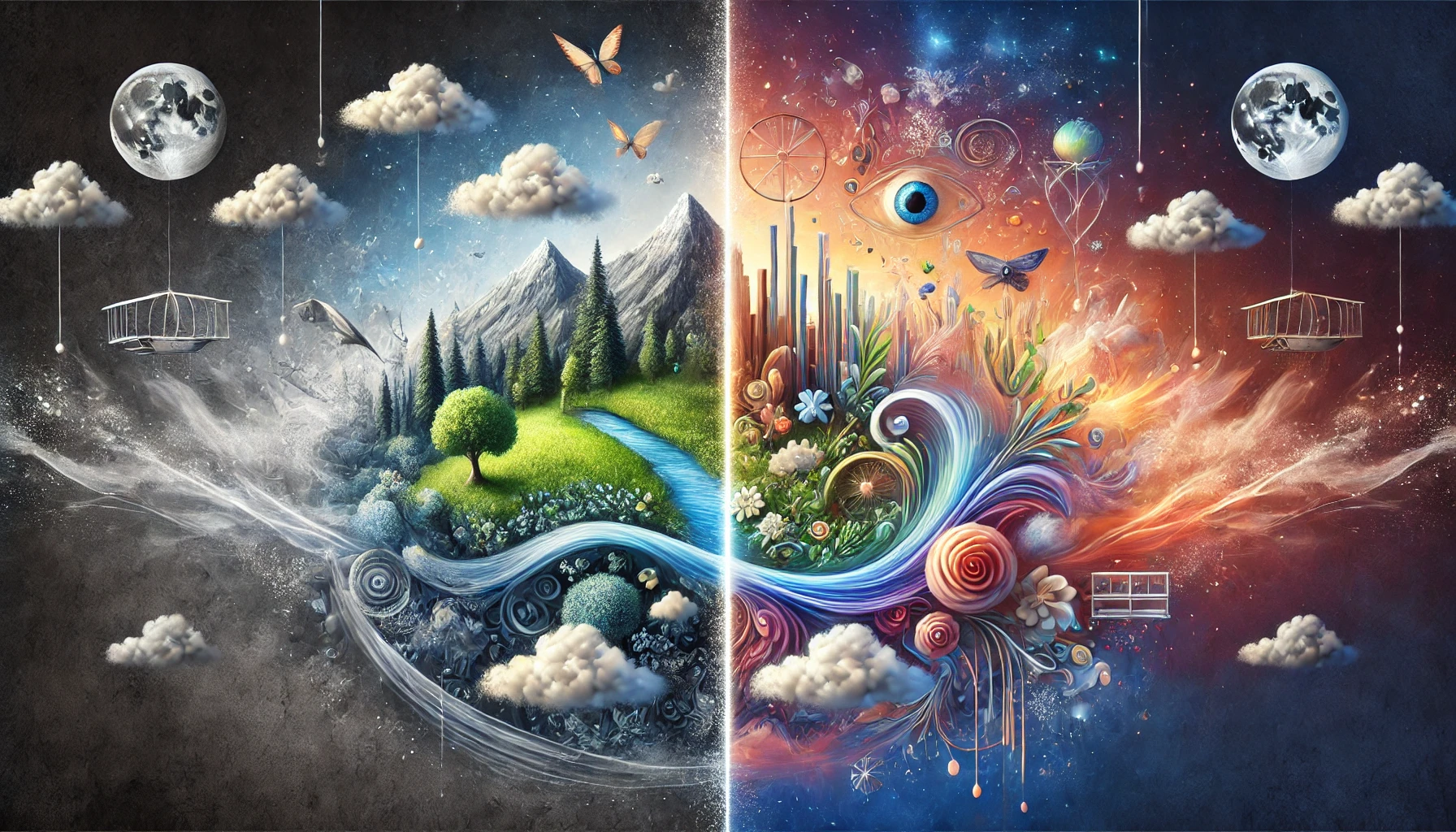While modern philosophers viewed images as inferior representations of the real world based on the senses, Sartre refuted this with the imaginary world. Sartre argued that the image exists as a complete whole in the imaginary world, independent of the real world, and has its own unchanging and unique qualities. This emphasized that art should be perceived in the imaginary world, not in the changing real world.
What is an image? Modern philosophers viewed images as being based on the senses, just as we construct the real world by perceiving objects in the real world through our senses. Here, the real world refers to the world that already exists objectively before it is perceived by humans, and the real world refers to the world that is grasped by human perception. However, although images are based on the senses, they are imperfectly perceived imitations of the real world. Therefore, they viewed images as a lower realm of perception and relatively inferior to the real world.
Sartre, however, disagreed with this position by presenting the imaginary world through his Theory of the Image. “The real world and the imaginary world are essentially incompatible,” Sartre asserted, explaining that the two worlds are perceived differently due to differences in perception and imagination. This does not mean that there are two worlds, but rather that we perceive the real world as perception and the imagined world as images. In the end, Sartre argues that the real world is divided into real and imaginary worlds according to the direction of our consciousness, and that both cannot be perceived simultaneously. Therefore, Sartre defines the image, which was previously considered a realm belonging to the real world and an inferior copy of it, as mental consciousness that takes place in the imaginary world completely independent of the real world.
For Sartre, the image is characterized by its independence from the real world, becoming a whole from the moment it is perceived. Whereas the real world as perceived by the senses changes as each detail is apprehended, the image is unchanging because it consists of only as much as we know or as much as we intend. For example, if the color of the light illuminating an object changes, the color perceived in the real world will change accordingly, but an image will always have the same color in the imaginary world, even if the light changes. Images are also characterized by being disconnected from the properties of the real world that are grasped by perception and appear only in the imaginary world. When you imagine a friend who left for a foreign country last year, you look at the empty room you used to share with him, and the real world of his absence disappears, and only the image of him in the imaginary world comes to mind.
From this Sartrean perspective, art should be perceived in an independent imaginary world, not in the real world, which is always changing. In the case of classical sculpture, for example, the artist tries to perfectly represent the object as he perceives it, but since the object perceived in the real world is constantly changing, there are inevitably difficulties in reproducing it by perception. However, if the sculpture is imagined in the imaginary world, it is possible to compose the work so that it remains as unchanged as intended. Sartre believed that art should be treated in an independent imaginary world rather than in the changing real world.

Sartre’s view has important implications for redefining the role of images in the artistic process. Art as the creation of an imaginary world rather than a representation of the real world emphasizes the artist’s subjective experience and imagination. For example, abstract art or surrealist works do not replicate the real world, but by expressing the artist’s inner world and imagination, they can convey new meanings and impressions to the audience. These works of art are born from the imagination and convey a consistent message to the viewer through unchanging images.
Sartre’s theory of the image also has implications for the development of modern media and digital art. Digital art allows for new forms of artistic expression that transcend the physical limitations of the real world. Images created through virtual reality (VR) and augmented reality (AR) technologies exist in imaginary worlds that allow the viewer to experience new experiences and sensations. These digital images exist independently of the real world and function as part of an unchanging imaginary world, according to Sartre’s theory.
In conclusion, Sartre’s theory of the image shows that images are not inferior copies of the real world, but play an important role as components of an independent imaginary world. It offers a new perspective on artistic creation and appreciation, and has had a profound impact on the development of modern art and media. In Sartre’s view, the image is an unchanging whole of the imaginary world, which can be made richer and more colorful in meaning through the creativity of the artist and the imagination of the audience.
 I’m a blog writer. I want to write articles that touch people’s hearts. I love Coca-Cola, coffee, reading and traveling. I hope you find happiness through my writing.
I’m a blog writer. I want to write articles that touch people’s hearts. I love Coca-Cola, coffee, reading and traveling. I hope you find happiness through my writing.